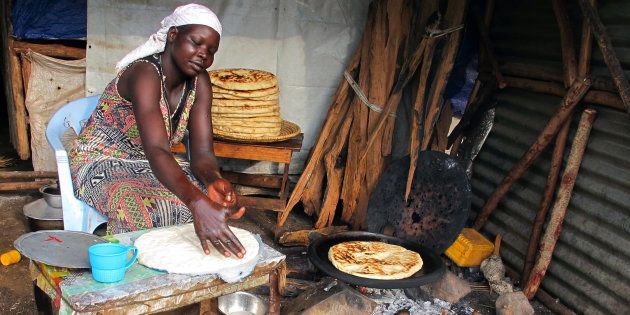
On 21 August 2017, StatsSA released the Latest Poverty Trends in South Africa Report -– an examination of abject poverty and inequality trends. These trends are based on the Income and Expenditure Survey [IES] and Living Conditions Survey [LCS] conducted by StatsSA derived from "household expenditure data".
The idea of households as used in this instance is often exclusionary of those living in squatter camps and alternative shelters due to the inability to afford housing. The reality of poverty is likely higher than this particular report indicates. There is also an under-reporting crisis that should be taken into cognizance in dealing with these statistics.
The revelations of these trends come as no surprise considering the socioeconomic situation in South Africa. South Africa has for decades after apartheid continued to be a model of socioeconomic exclusion. Historically, socio-economic exclusion in South Africa was racially biased, now the depth and extent of poverty is becoming increasingly intersectional. This myriad of intersections connects race, gender, class and age to produce an intensified state of poverty.
So to us, that over 55 percent of the South African population living in poverty, unfortunately, confirms what we have long seen play out in our society and policies due to a linear understanding of development which is often very economic based and exclusionary of social and cultural factors.
A majority of black South Africans who are currently active in the job market are wage economic slaves i.e. though employed, they are still living beyond the poverty line
In the South African context, it's fitting to argue that poverty bears the face of a black person and that this particular black person is a *womxn, and her children inherit her destitution thus being trapped in a vicious cycle of poverty with no end in sight. This is partly due to the unremunerated time that womxn invest in the functioning of society [unpaid domestic work] and also the institutional and systematic barriers that continue to make it difficult for womxn to enter the job market.
It is also important to note that a majority of black South Africans who are currently active in the job market are wage economic slaves i.e. though employed, they are still living beyond the poverty line. For example, research shows that a majority of black people are paid below the minimum wage –- thus further trickling the plight of poverty in the black community as a majority of the working class are the working poor.
It has also become apparent that the current government's neo-liberal, short sighted poverty alleviation interventions are simply inadequate in addressing the issue of transformation and socio-economic emancipation. There is a persistent discord in policy formulation and the lived experiences of the poor and as progressive as the South African grants system has been, it is simply is not comprehensive enough. In South Africa there is a huge gap in social security with people between the ages 18-59 receiving no form of social protection to hedge against the various forms of unemployment or income insecurity.
The influx of new labour force entrants has incapacitated the labour market from absorbing a majority of new entrants, thus each other quarter Stats SA reports have shown an increase in unemployment. The first Quarterly Labour Force Survey in 2017 revealed that nearly 40 percent of the South African youth are unemployed -- a huge and worrisome number for a country with a majority youth population.
While there is no single panacea for curing poverty, a multidimensional approach is required to drastically reduce the critical levels that currently exist.
While there is no single panacea for curing poverty, a multidimensional approach is required to drastically reduce the critical levels that currently exist. This approach needs to recognise the multi-layered and intersectional nature of poverty.
These include policies and strategies responsive to the feminisation of poverty, such as investment in girl children's education, the adoption of a national minimum wage towards the realisation of living wages, comprehensive social protection which includes the roll out of a universal basic income grant that will ensure a decent standard of living for all.
Poverty is a violation of an individual's basic human rights. Human Rights being inextricable, inalienable and inter-dependent –- rising poverty rates are also indicators of a deteriorating human rights situation.
* Womxn is a term used to indicate that 'women' are not the extension of men and seeks to highlight the structural barriers all womxn face in a patriarchal society. The term womxn attempts to indicate that gender is a spectrum, its fluid and thus this term includes and speaks to the entire LGBTQI community that sits outside of the heteronormative patriarchal binary conception of 'man and woman'.